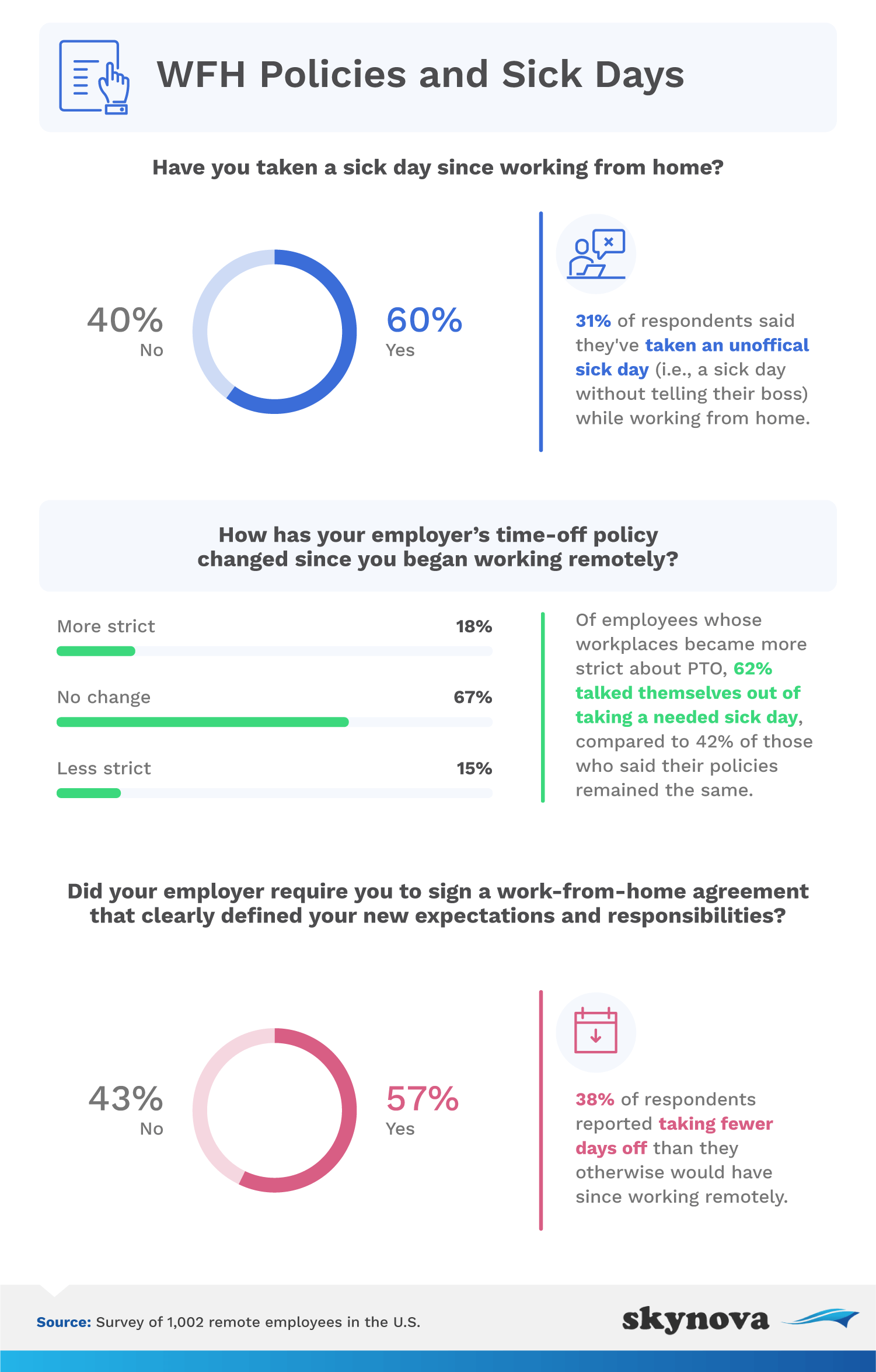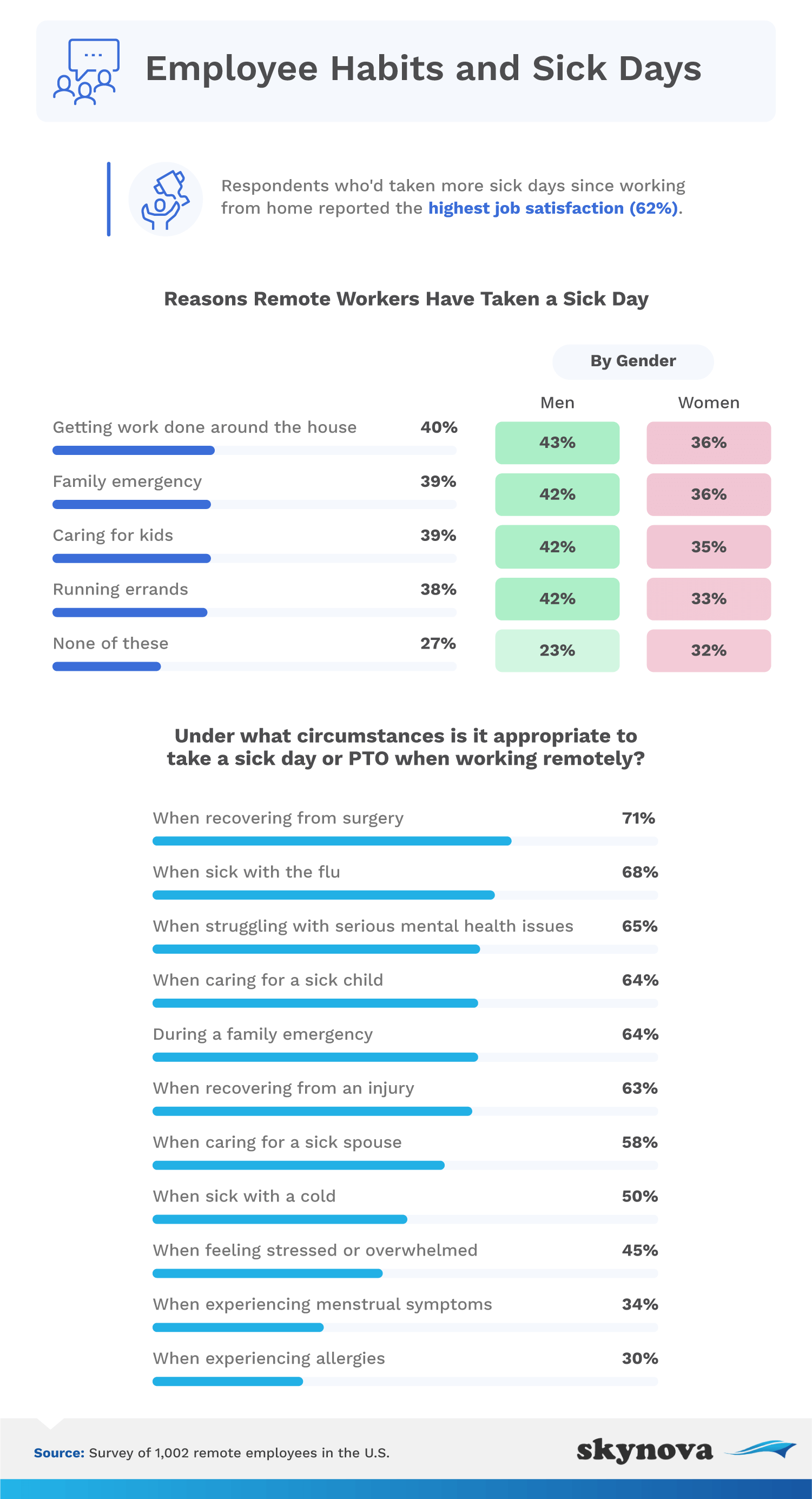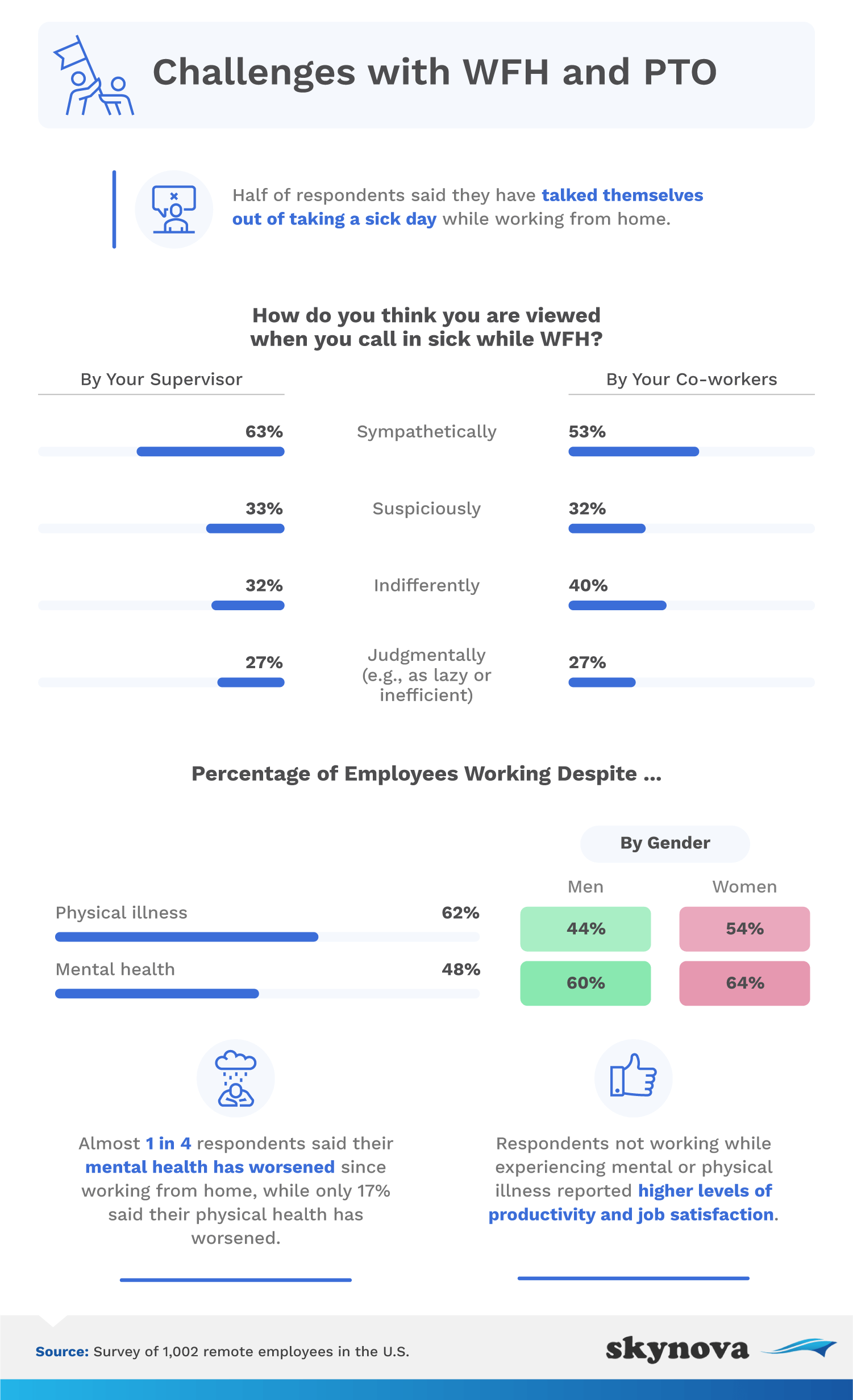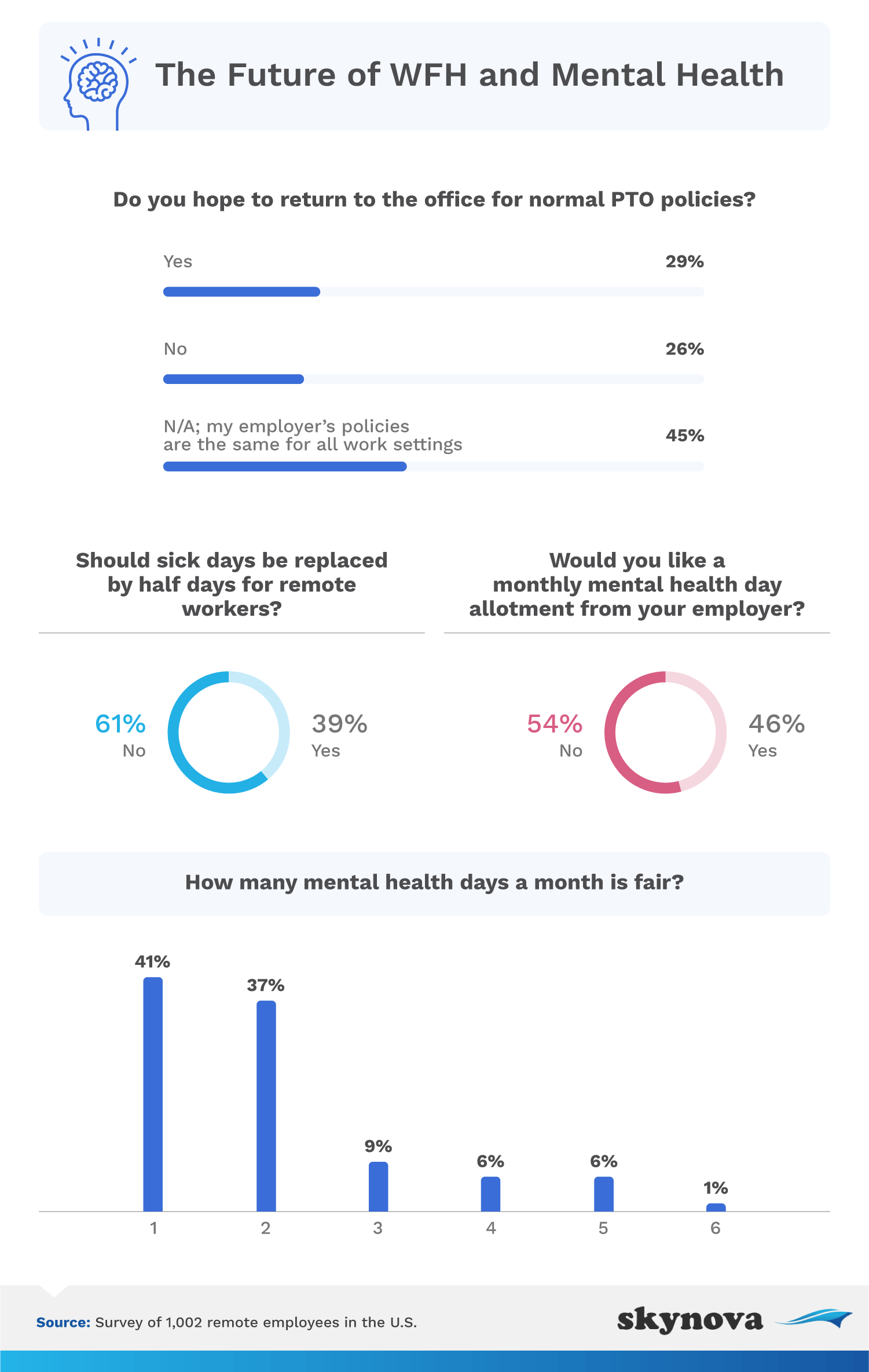
|
In the last year, the coronavirus pandemic has created new work environments for many employees. In a study of over 5,850 employed Americans conducted by Pew Research, more than 50% of respondents started working from home for the first time as a result of COVID-19. While this comes with benefits, such as being able to customize your working hours and eliminating commute times, it has also brought on challenges that range from staying motivated to justifying time off.
We surveyed just over 1,000 employees who started working from home during the pandemic to learn more about their time off and sick days since the COVID-19 crisis began. Has their employer adjusted expectations, or have workers shifted their mindset? How has it affected them? Read on to find out.
While 67% of employees said there have been no changes to their time-off policy since switching to a remote work model, 18% said their employer has become more strict.

Fifty-seven percent of employees reported having to sign an agreement that clearly defined their expectations and responsibilities as a remote employee. People who had an agreement were less likely to report high work satisfaction and productivity than those who did not have an agreement.
According to the previously mentioned Pew Research study, younger employees have found it particularly difficult to stay motivated while working from home – with 53% of those aged 18 to 29 years old admitting as much.
Nearly half of our respondents said they’ve used about the same number of sick days during the pandemic as they did before the health crisis. However, those who’d taken more sick days reported the highest level of job satisfaction (62%).

Occasionally, workers claimed sick days in order to accomplish other things. Forty percent had used a sick day to get work done around the house, while 39% used their days off for family emergencies and child care. For all of the circumstances we asked about, men were more likely than women to utilize their sick days for things other than being ill.
Since working remotely reduces your exposure to others (and therefore your chance of infecting them), when do our respondents think it’s appropriate to take a sick day? Well, 71% said to recover from surgery, 68% said if you have the flu, and 65% felt it suitable to take a day to cope with mental health issues. People also said it was appropriate to use a sick day to care for a sick child (64%) or to deal with a family emergency (64%).
While working from home, 50% of respondents had talked themselves out of using a sick day.

Perhaps this is due to the fact that 33% of respondents believed their supervisor would be suspicious of their reasons for taking time off, while 27% had concerns about being judged lazy or otherwise. Similar percentages believed their co-workers would react in the same way. Sixty-two percent of employees had worked from home despite a physical illness, while 48% had worked through mental health issues.
Nevertheless, 33% of employees said their mental health has improved since working from home, in comparison to 44% who’d seen no change and 24% experiencing a decline to their mental health. In the U.S., the number of adults experiencing anxiety and/or depressive disorder symptoms rose from 11% in January 2019 to 41% in January 2021, showing just how many Americans have struggled with their mental health since the start of the pandemic.
Even though 45% of employees were ambivalent on the subject (due to the fact that their time off policies remained the same throughout the pandemic), 29% are looking forward to returning to the office and their normal PTO policies.

In general, our respondents believed WFH employees should have the same sick day policies as on-site workers, with 61% rejecting the idea that remote employees should receive half days off in lieu of sick days.
When it comes to mental health in a post-pandemic world, 46% of respondents would like to see a monthly mental health day allotment from their employer – with the majority of respondents suggesting one or two days per month is fair.
While most workers’ time-off policies remained unchanged during the pandemic, fewer are taking sick days and many are still seeing barriers to taking time off. Some avoid the perk in response to being fully remote, and many still think their supervisor views them with suspicion or judgment when they call in sick while working remotely. Still, taking time for physical and mental health is important for every worker’s well-being. Those who don’t work through physical or mental illness report higher levels of productivity and job satisfaction. Almost half of people would prefer a monthly mental health day provided by their employer, and that seems telling as 1 in 4 people report a decline in mental health since working remotely.
From invoice templates to accounting software, we provide a diverse array of modules for a seamless online experience.
We surveyed 1,002 people working remotely with PTO benefits. 58% of respondents identified as men, and 42% of respondents identified as women.
To help ensure that all respondents took our survey seriously, they were required to identify and correctly answer an attention-check question.
These data rely on self-reporting by the respondents and are only exploratory. Issues with self-reported responses include, but aren’t limited to, the following: exaggeration, selective memory, telescoping, attribution, and bias. All values are based on estimation.
Working from home has millions of Americans looking to better adapt to this lifestyle change. If you know someone who would benefit from our research, we encourage you to share the results of this study with them. We just ask that you do so for noncommercial use only and to provide a link back to the original page so contributors can earn credit for their work.